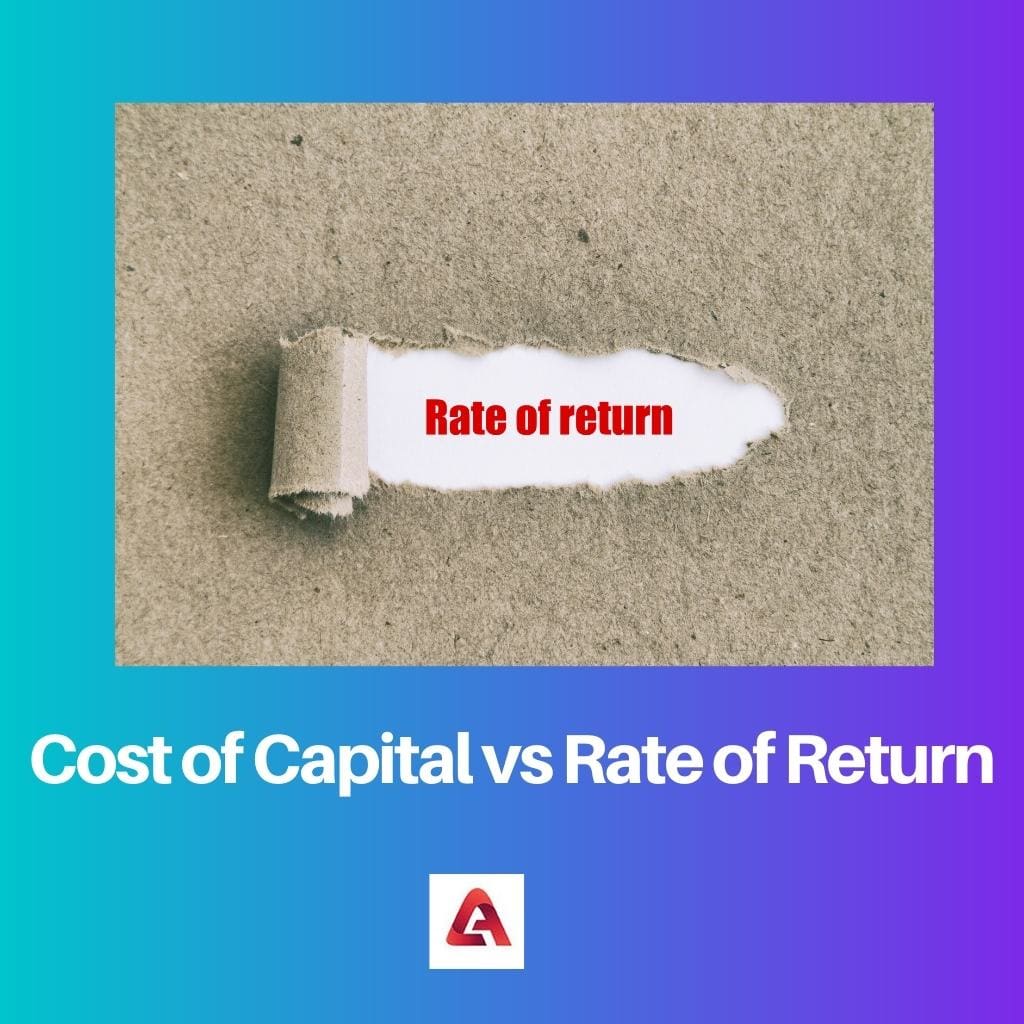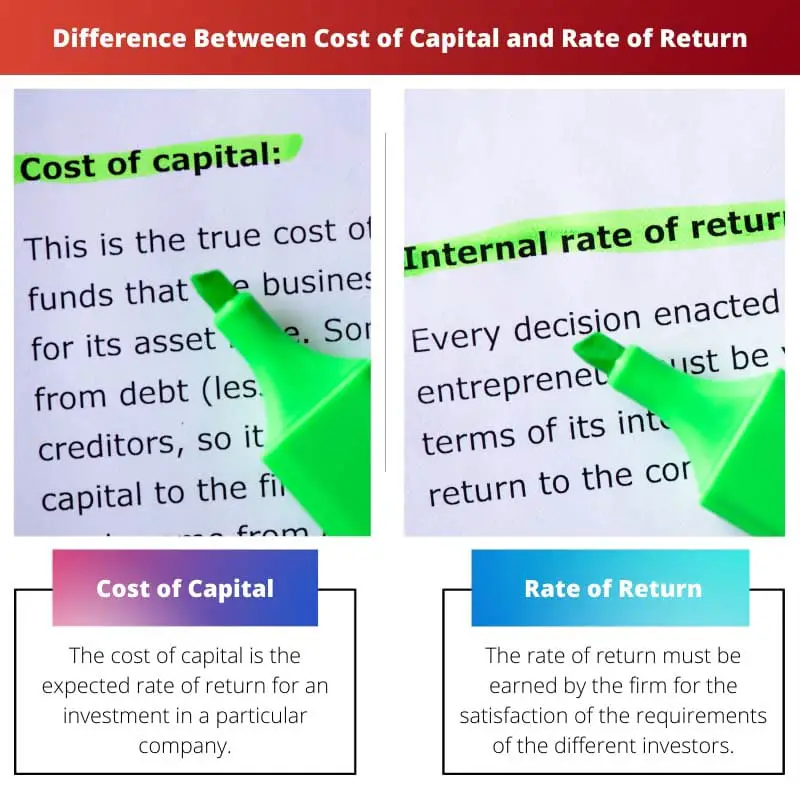The world of finance is vast, comprising a lot of things like investments, banking, corporate finance, derivatives, metrics, and so on. All of these things are important for running the economy of the country.
The cost of Capital and Rate of Return are two of the most important financial concepts.
Key Takeaways
- Cost of capital refers to the minimum return required by investors, while the rate of return is the actual return earned on an investment.
- The cost of capital is used to evaluate the feasibility of an investment, while the rate of return measures the profitability of an investment.
- The cost of capital is affected by various factors, such as interest rates and market conditions, while the rate of return is affected by the investment’s performance.
Cost of Capital vs Rate of Return
The cost of capital is the expected rate of return for an investment in a particular company. The cost of capital represents the minimum return a company must earn on its investments to satisfy its shareholders and lenders. The rate of return is the return or profit generated on an investment. The rate of return is the actual return an investment generates compared to the cost of capital. If a company’s rate of return on investment is higher than its cost of capital, the investment is considered profitable.

When a company issues securities such as equity shares, preference shares, or debentures with collecting capital, at the time of issuing these, they guarantee to pay back the money along with some interest, which is called the Cost of Capital.
When people are investing in a company by buying shares or securities, they are taking a risk. And because they take a risk, they need to be given a specific minimum interest or a profit on their money or capital investment.
This gain or interest is called the rate of return.
Comparison Table
| Parameters of Comparison | Cost of Capital | Rate of Return |
|---|---|---|
| Definition | The cost of capital is the expected rate of return for an investment in a particular company. | The firm must earn the rate of return to satisfy the requirements of the different investors. |
| Utility | Capital Structure, Evaluation of investment alternative, Assessment of financial performance. | Minimizing risk and assuring shareholders. |
| Components | Cost of Debt, Cost of equity share capital, Cost of retained earnings, and Cost of preference share capital. | Weighted components of cost of capital |
| Terminology | Cost of Capital does not have any other terminology. | The rate of return is also known as WACC or the overall cost of capital. |
| Importance | Maximization of shareholders’ wealth. | Providing stability to capital structure. |
What is the Cost of Capital?
The Cost incurred in retaining the funds obtained from various sources and employed in business is referred to as the Cost of Capital of a firm.
Cost of Capital is the rate of return that the company must earn to satisfy the investors who have provided long-term finance.
It is the rate of return that a firm needs to earn to attract the suppliers of funds to make available the funds to the firm. Maximizing shareholders’ wealth is achieved with the help of the Cost of Capital.
The Cost of capital is useful in designing a firm’s capital structure, evaluating investment alternatives, and assessing financial performance.
A firm’s earnings are less, the risk to investors is more, and capital structure is imbalanced if the Cost of capital is high.
The components of Cost of Capital refer to each source from which funds are raised: Cost of Debt, Cost of Equity, Cost of Retained Earnings, and Cost of Preference Share Capital.
There are different formulas for Computing the Cost of Capital.

What is the Rate of Return?
When investors invest in a company, they must be given a minimum required Rate of Return on their Investment.
The Rate of Return is the Required Rate of Return, also known as the Weighted Average Cost of Capital- WACC. Companies use different types of capital to finance their activity.
The average Cost of capital is to be determined to determine the company’s Cost of capital. Weighted Average Cost of Capital is the weighted average cost of various sources of finance.
The weighted Average Cost of Capital is the rate of return the firm must earn to satisfy the bare minimum requirements of the different investors.
The decision regarding appropriate weights and related aspects is the most crucial part of this process.
To determine a single overall cost of capital, all costs of various components after tax are taken together while calculating the required rate of return or weighted average Cost of capital.
The approach is based on various assumptions regarding future proposals, capital structure, costs, and the company’s financing decisions.
It helps minimize risk, assuring the shareholders and stabilising the capital structure.

Main Differences Between Cost of Capital and Rate of Return
- The Cost of Capital is the expected rate of return on investment, and the required rate of return is the minimum return on investment.
- The cost of Capital is used to design the capital structure, evaluate investment alternatives, and assess financial performance. Whereas, Rate of Returns minimizes the risk for investors and gives assurance.
- The components of Cost of capital are- Cost of debt, Cost of equity, Cost of retained earnings, and Cost of preference share capital. The components of WACC are weighted components of the Cost of capital.
- The rate of return is called the required rate of return or WACC. On the contrary, the Cost of Capital does not have a substitute term.
- The cost of Capital helps in the wealth maximization of shareholders, and the Rate of Return helps provide stability.






